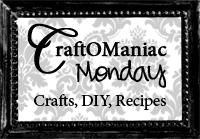Years ago, Martha Stewart listed a laminating machine among her “Good Things,” citing it as a useful tool for making placemats, bookmarks and the like. I’ve never been able to afford a laminator—or the very expensive laminating sheets that go with it—but I did like the idea of laminating personal artwork or pretty paper to make useful gifts.
Sometimes you find yourself in need of a gift for Grandma, for a teacher, for a coach or a kids’ group leader, and you don’t have a lot of time or resources available to you. Sometimes you need a way to mark everyone’s places at a daycare or playgroup table. Sometimes you want a new place setting for the kids or mats for a themed birthday party. Laminated placemats work well for any of these occasions.
Contact brand’s clear, self-adhesive plastic can be used in place of expensive laminating sheets and a laminating machine. Sold as shelf lining paper, Contact paper is widely available in grocery stores, hardware stores, and discount department stores like WalMart.
Although a little more challenging to manipulate than a laminating machine, clear self-adhesive plastic is much less expensive than lamination sheets. With a little care, you can achieve excellent results that are less brittle and more durable than comparable projects made using a laminator. (I’ve kept, and used, some of my placemats for decades.)
To make laminated placemats, you’ll need;
- A placemat you can use for a pattern, or a large ruler so that you can measure and cut some rectangles
- A sharp pencil
- Scissors
- Art supplies for making a picture (We used just crayons for this one but you can use whatever you like. Crayons, paint, glitter glue, markers, coloured pencils, and stickers all work well. Just try to avoid materials that will leave a raised surface. You want the finished picture to be flat.)
- Poster board or cardboard cut from a large cereal box (You can buy poster board at most stationary or office supply stores and, quite often, at the Dollar Store.)
- Clear (transparent) Contact self-adhesive plastic
Use a pencil to trace your placemat shapes onto the poster board or cardboard. (I’ve made a lot of these so I have a pattern.) You can either trace around a placemat you like or you can measure and cut out 12 x 16-inch rectangles.
Give the cut mats and art supplies to your kids, and set them to work decorating. If you want to, you can suggest a theme.
When the kids have finished decorating their mats, allow time for any glue or paint to dry.
Make sure your work surface is clean. Any bits of eraser, stray pieces of paper, or dust have a way of finding their way under the plastic.
Unroll the Contact paper, with the backing sheet facing upward. Lay your placemat on top of the paper (to use as a measuring guide) and cut two pieces of self-adhesive plastic, each slightly larger than the placemat.
Carefully remove the backing from the first sheet of self-adhesive plastic, making sure that it doesn’t curl up and stick to itself as you remove the paper.
Make sure that the peeled plastic is lying flat, with the sticky side up. Drop the placemat, picture side down, onto the sticky side of the plastic.
Carefully trim away some of the excess plastic around the edges.
Carefully trim away some of the excess plastic around the edges.
Remove the protective backing from the second piece of self-adhesive plastic, just as you did the first. Leave it sticky side up.
With the placemat picture facing upward, drop the placemat—with its plastic covering attached—onto the sticky side of the second sheet of plastic. Smooth it out carefully, making sure that there’s an edge all the way around the placemat where the two pieces of plastic are adhered to each other.
Trim away most of the excess plastic, leaving about a quarter inch of clear plastic all the way around the mat.
Check for air bubbles. If there are any, pierce them with a pin and then smooth them out as best you can.
That’s it. You’re done.
If you want to make a quantity of similar mats for use as themed place settings or for a fundraiser, you can glue wrapping paper to the poster board instead of decorating it with artwork.
Cut the poster board to size, cover it with spray adhesive or glue from a glue stick, then drop it sticky-side-down on to the back (undecorated side) of a sheet of wrapping paper. Trim the excess wrapping paper away so that the wrapping paper and mat are exactly the same size. Proceed as directed above. Your finished mats will look something like these:
_____________________________________________This post is linked to Busy Monday hosted by A Pinch of Joy, to Making Mondays Marvelous hosted by C.R.A.F.T., to Think Pink Sunday hosted by Flamingo Toes, to Craft-o-Maniac Monday hosted by Craft-o-Maniac, and to Bedazzle Me Monday hosted by Everything Under the Moon.












































